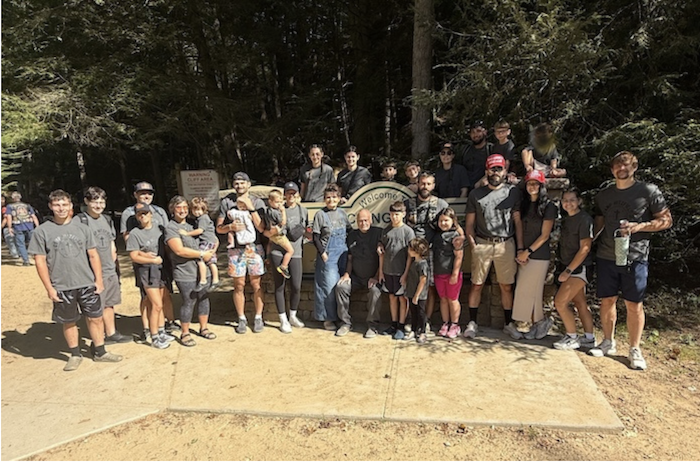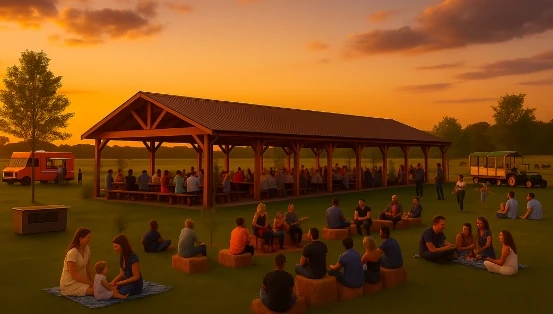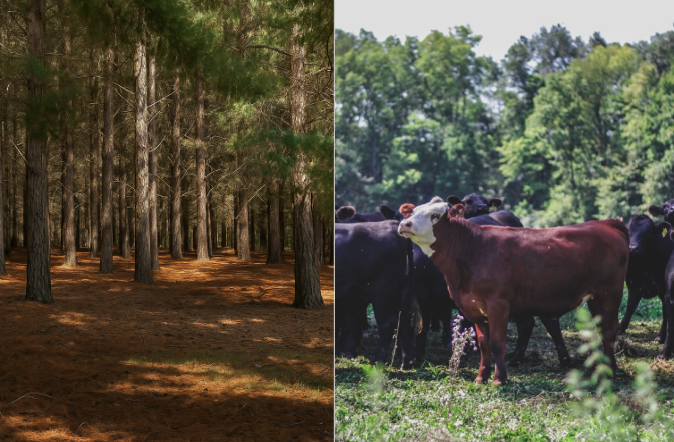Today, you get a little history lesson from your farmer. 🙂
While our family proudly includes Heritage in the name of our pork, it isn’t just a fancy name. It’s an indicator of the pork's quality, nutrition, and history – not to mention the farmer’s ethical breeding practices.
Let’s explore the history of heritage pig breeds in more detail, so you can make an informed choice about pork when you shop.
The Definition and Importance of Heritage Pigs
By definition, a heritage pig breed is one with deep historical roots. These breeds have been around for hundreds of generations. In fact, the first pigs were brought to America by Columbus in 1493.
Back then, pigs came in distinct colors, sizes, and shapes – the pink pig with a curly tail that comes to mind today didn’t exist.
Heritage pigs were allowed to roam on pastures and woodlands. Their diet didn’t include antibiotics, GMOs, or growth promotants. Farmers carefully bred the best for their hardiness, health, and ability to adapt to outdoor environments. The result was delicious, sustainable pork rich in nutrients and vitamins.
Fast forward to the Industrial Revolution – pig farming changed drastically. Industrial operations were developed to house, feed, and harvest pigs more efficiently than small family farms. To maximize profits in this system, animals were bred for rapid growth and size.
Today, it’s still the same…
Most grocery store pork is no longer heritage. It comes from concentrated animal feeding operations (CAFOs), where pigs are kept in overcrowded conditions, farrowed in small crates, and crossbred with little thought to hardiness and quality.
Seven Sons and our partner farms continue to champion the ethical rearing of heritage pigs. Like our forefathers, we prioritize the health and ethical care of our animals. Our heritage pigs are free to roam, play, and thrive – and we never use antibiotics or GMOs.
Diet of a Heritage Pig: Back to the Roots
Not only do heritage pigs grow in vastly different conditions than factory-farmed livestock, but their diet is also vastly different. Industrially raised pigs are often fed diets limited to corn and soybeans, which are cheap and easy to produce at scale.
On the other hand, our heritage pig breeds are fed a mix of oats, barley, and other non-GMO grains including corn and soy. But best of all, and a key difference, is that the hogs are able to regularly forage for starchy roots and grubs, and all the colorful vegetation on our open pastures.
We pasture raise our hogs and let them roam freely, interacting with the land in their natural and instinctive way. Combined with stress-free rearing, this creates richly colored, juicy meat with a wonderful, buttery flavor.
Exploring the Diverse Pig Breeds
Now, we’ll dive into some of the most popular heritage breeds, looking at their history, characteristics, and flavor profile.
Berkshire Pigs
Berkshire pigs get their name from their place of origin: Berkshire, England. They’re one of the oldest heritage pig breeds alive today, with roots dating back to the 17th century.
These animals have a distinct black coat with white markings on their snout, tail, and hooves. They have short legs and large bodies and can weigh up to 500-600 lb at full size.
Flavor-wise, the Berkshire pig is renowned for its rich marbling, intense savory flavor, and melt-in-the-mouth tenderness.
Red Pig Breeds
Next, we’ll look at three of the most well-known red pig breeds: Tamworth, Red Wattle, and Duroc.
Like the Berkshire, the Tamworth originates from England, with historical references dating back to the 1800s.
The Tamworth is active, long-legged, and lean, with an auburn coat and long snout. The meat is dark in color, with a nutty, sweet, and succulent flavor.
The Red Wattle, a hardy breed, was first recorded in US history books in the mid-1800s. This breed also has a dark auburn coat and distinctive wattles on both sides of its neck. The meat is pinkish-red in color, and has a succulent, earthy flavor.
Lastly, there’s the Duroc. The Duroc dates back to New England in the 1800s, and is thought to come from Africa originally. These large, compact pigs have a mahogany coat, and can weigh anywhere from 700-900 lbs. In terms of flavor, the cuts of pork from this breed are deeply marbled with a rich, bold, and juicy taste. (There’s a reason you’ll find a number of Duroc in the Seven Sons Farm ecosystem.) ;)
Spotted
The most well-known spotted heritage big breed is the Gloucestershire Old Spot pig, which, as the name suggests, originates from Gloucestershire, England. This breed has a white coat with black spots.
When it comes to taste, the meat from this breed has a sweet, juicy flavor profile that’s perfect for pork chops or roasting.
Hampshire and Other Heritage Pigs
The Hampshire hog is the oldest American breed of pig, first written about in the 1790s. This breed has a distinctive coat: primarily black with a white ring across its shoulders and front legs. The meat is known for succulence and tenderness.
The Environmental Footprint of Heritage Pig Farming
Switching to heritage pasture-raised pork is better for your health, the welfare of the animal, and the environment.
At Seven Sons, our heritage hogs play a vital role in nurturing our environmental ecosystem. We use regenerative grazing practices, shepherding our pigs from one section of pasture or forest to another to support soil health, carbon sequestration, and improve biodiversity.
The result is tasty, nutritious pork that supports environmental sustainability and promotes animal well-being.
I hope you learned something today, and enjoyed the history lesson.
Ready to taste the difference? Shop our pasture-raised heritage pork today.













